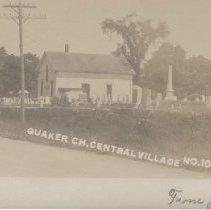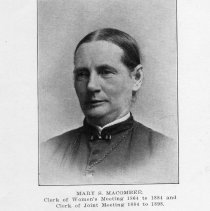Search Term Record
Metadata
Name |
Quakers |
Number of Archive records |
11 |
Number of Photo records |
2 |
Related Records
-

-
2005.054.017 - on the founding of the Meeting house and Paul Cuffe
Quaker Church Quakers
Record Type: Archive

-
2005.081.147 - Quaker Church, Central Village Also see #2005.081.145/146 and #2005.087.007. From John written in pen on front of card and mailed on Nov 1906 to Mrs. Victoria Pettey, Westport, Mass.
Quaker Church Central Village Quakers
Record Type: Photo

-
2005.122.160 - Booklet on the history of the Westport Monthly Meeting of the Friends. published at the time of Westport's bicentennial
Quakers
Record Type: Archive

-
2005.122.161 - A history of the Friends' Meeting in Westport. 1716-1916. Includes pictures of various members.
Quakers
Record Type: Archive

-
2005.122.168 - 250th anniversary of Westport monthly meeting of Friends. Program for services held.
Quakers
Record Type: Archive

-
2005.58.001 - a history printed in 1987 on the history of the Westport Monthly Meeting of Friends.
Quakers
Record Type: Archive

-

-

-

-

-
2019.024.069 - Photos of Westport, 1962. Quaker Meeting House.
Central Village Quakers Quaker Church
Record Type: Photo

-
2022.029.001 - Notes and remarks for 1833 by Clarkson Macomber: includes description of silkworms, mulberry tree orchard. https://wpthistory.org/clarkson-macomber/
Silkworms Quakers Schools
Record Type: Archive

